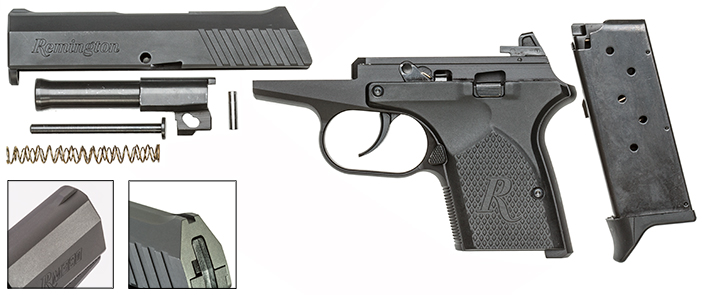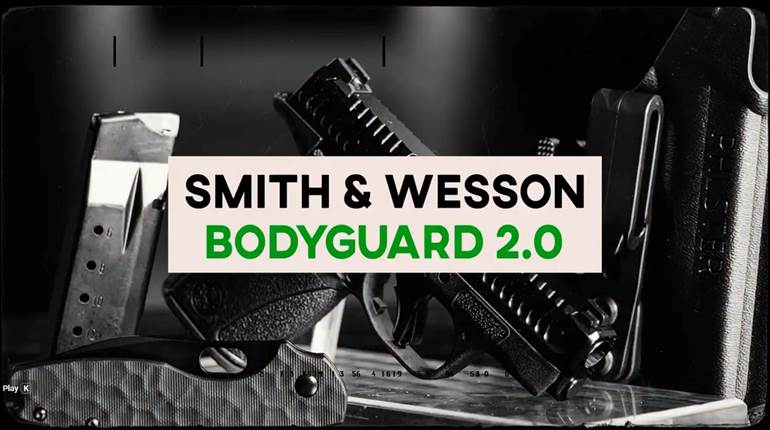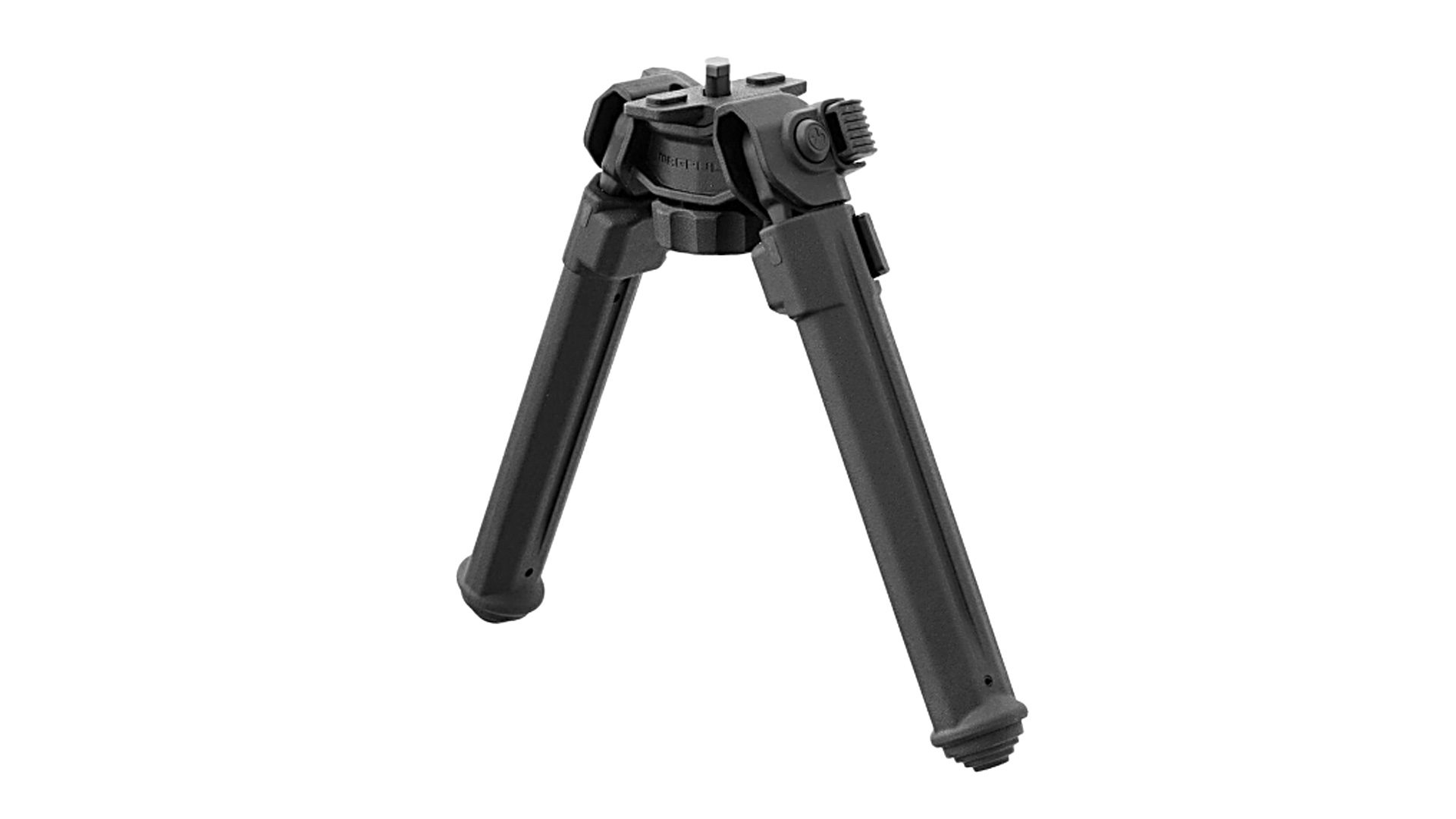
In 2014 Remington purchased New York-based handgun manufacturer Rohrbaugh, which had made a name for itself with the pocket-size R380 semi-automatic in .380 ACP and the nearly identical R9 in 9 mm Luger. The acquisition allowed Remington to revise the R380, resulting in the RM380 reviewed here.
Manufactured at Remington’s Huntsville, Ala., facility, the new pistol appears virtually identical to the Rohrbaugh R380/R9; however, there are some subtle and not-so-subtle differences between them.
The Remington RM380 is a hammer-fired, tilt-barrel, locked-breech, autoloading pistol. Its dual, nested recoil springs are more easily compressed than those typically found in blowback-operated guns of similar size and chambering—no small consideration for individuals with limited hand strength who might otherwise struggle to cycle the slide. Deep cocking serrations machined into the rear portion of the slide also aid in its manipulation.
Because the gun is designed to be both print- and snag-free, the slide’s edges have been thoughtfully contoured. Milled into the slide are no-frills, low-profile sights; the front consists of a simple 0.110"-wide ramp, while the rear is of the notch style with a 0.135" opening. There are no colored outlines or fiber-optic or tritium inserts; however, the sights are easy and quick to acquire, as well as robust.
The extractor lies in a machined pocket to the rear of the lowered ejection port, and an integral ejector is on the left wall of the slide. The design of the slide and barrel is such that a loaded round is visible from above and from the side.

Unlike many .380 ACP-chambered “pocket” pistols with polymer frames, the RM380’s frame is machined from durable, low-maintenance, aircraft-grade 7075 aluminum alloy that is anodized black. Again, care has been taken to sculpt the frame so that there’s nothing to snag. A nice carryover from the Rohrbaugh pistols is the under-cut trigger guard, which affords a higher hold and a solid two-finger grip with the standard magazine in place—or three fingers when using the magazine with the extended baseplate. The higher hold effectively lowers the bore’s axis in the shooter’s hand, helping to minimize muzzle flip. Two other welcome additions are the extended beavertail, which eliminates “slide bite,” while finely-executed checkering on the frontstrap improves purchase. Attached to the aluminum frame are glass-filled nylon stocks with molded-in checkering and the Remington “R” logo. They can be quickly swapped out if so desired.
Those familiar with the R380 and R9 pistols will instantly recognize that, on the Remington RM380, a bilateral, low-profile magazine release button has replaced the grip heel-located magazine release of the Rohrbaughs. Moreover, there’s a fully functional slide stop; the slide can be locked open and will automatically do so after the last round is fired. Because there is no external safety, the trigger is of the long, double-action-only design. On the test gun, the trigger broke after a protracted, yet smooth, pull that averaged 9 lbs., 2 ozs. The RM380 has double-strike capability; that is, should a round fail to fire with the initial trigger pull, a second attempt can be made.
The RM380 is shipped with two magazines. Although both steel, single-stack magazines have a six-round capacity, one features a standard baseplate while the other has a pinky-accommodating extension. Witness holes in the side of the magazines help verify the number of rounds remaining.
To wring out the Remington RM380, we headed to the range with a wide assortment of .380 ACP ammunition. Please note that +P and +P+ ammunition cannot be used in this firearm. Given that the RM380’s intended use is as a concealed-carry “pocket” pistol, testing occurred at 7 yds. from a sandbag rest. With all three ammunition types, accuracy was sufficient for the pistol’s envisioned use.
With accuracy testing completed, we fed the RM380 a smorgasbord of leftovers from past .380 ACP testing. Regardless of the bullet’s weight or profile, all fed, fired, extracted and ejected without a single malfunction.

Fortunately, a proper sight picture resulted in correct windage; however, the gun did print about 2" to 3" high (depending on the load) at 7 yds., requiring compensation at greater distances. Elevation adjustment would require physically modifying the sight. Once again, for the gun’s intended purpose, adjustments wouldn’t be necessary.
In the end, we found the Remington RM380 to be a good contestant in the increasingly crowded field of pocket-size carry pistols. It worked without issues, straight out of the box. Moreover, with a suggested retail price of $436, and considering its pedigree, it’s no stretch to call the RM380 a bargain.






































